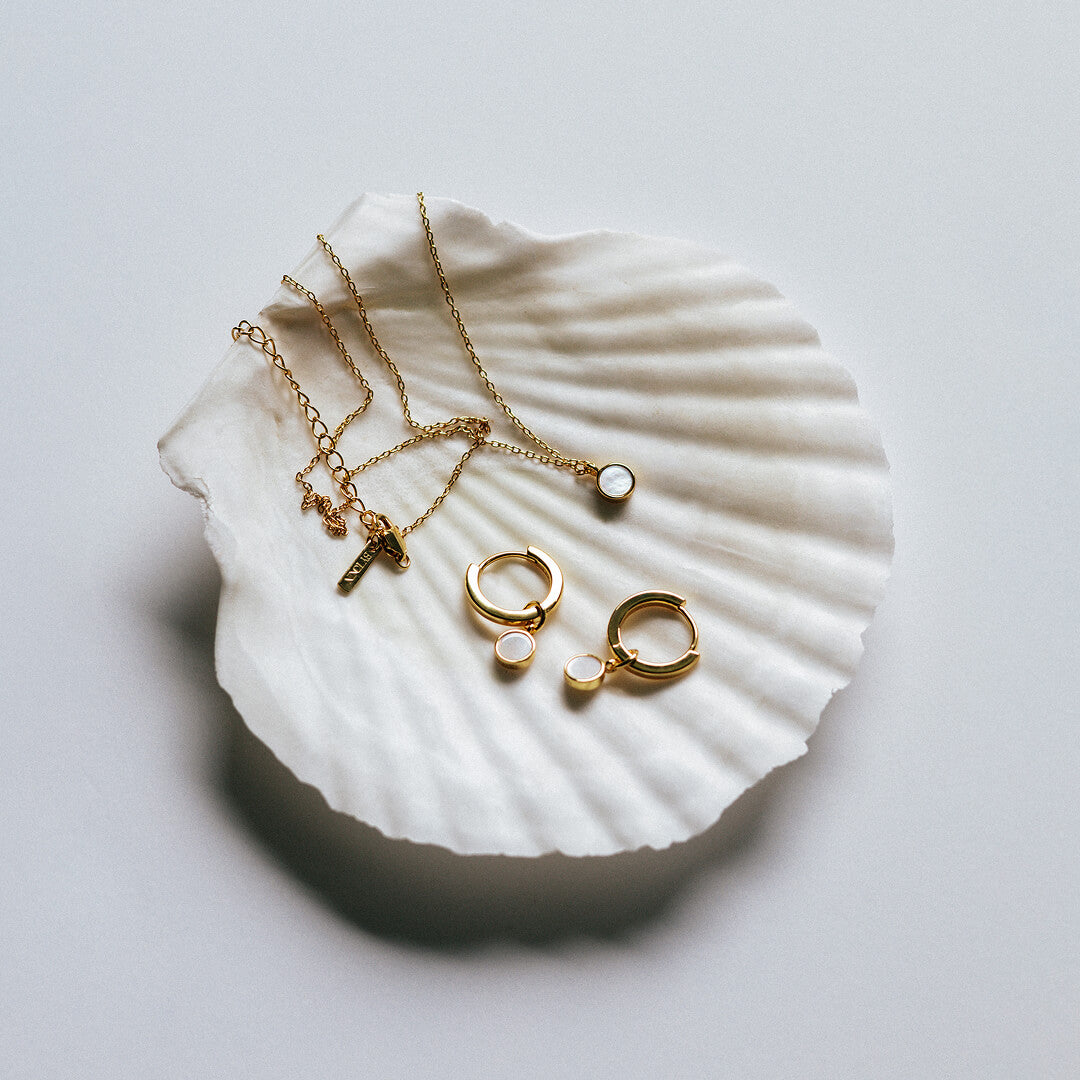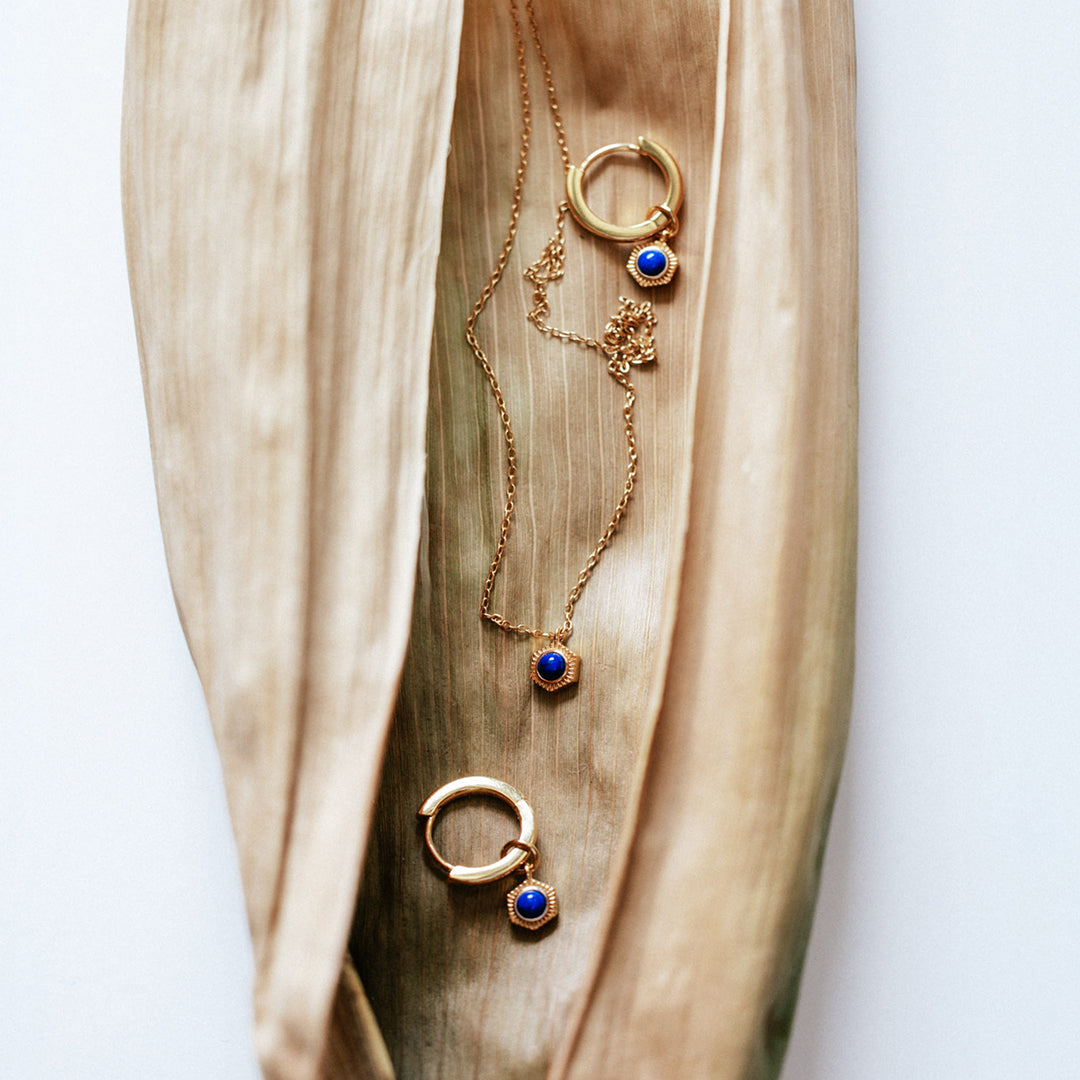What makes Sterling Silver the perfect base metal for your plated jewellery
When you see jewellery described as gold-plated or silver-plated, there’s often a base metal underneath that provides structure and strength. This base metal is what the plating is applied over. At BY TONIN, we only use sterling silver as the base metal for our plated jewellery. Let’s dive into why sterling silver is the ideal choice for a base metal under plating and what that means for you.
What Is a base metal in jewellery plating?
The base metal is the core metal that forms the body of the jewellery piece. Plating is a thin layer of precious metal, like 18k gold, applied on top to give it a beautiful finish. Base metals can be many different metals such as copper, brass, or nickel. But the base metal matters because it affects the durability, feel, and longevity of the jewellery.
Why we use sterling silver as the base metal?
Sterling silver is an alloy made of 92.5% pure silver combined with other metals, usually copper. It is a popular choice for jewellery bases, especially when plating is involved, because:
-
Strong and durable: Sterling silver holds its shape well and withstands everyday wear, which means plated jewellery is less likely to bend or break.
-
Hypoallergenic: It is less likely to cause skin irritation compared to other base metals like nickel or brass.
-
Ideal for plating: The smooth surface of sterling silver allows plating to adhere evenly, resulting in a beautiful and long-lasting finish.
-
Quality feel: Even if the plating wears off over time, the silver underneath remains valuable and attractive.
Sterling silver stands out as a superior base metal because it offers a perfect balance of strength, beauty, and skin-friendliness. Unlike cheaper base metals that can cause irritation or tarnish quickly, sterling silver provides a stable, non-reactive foundation. This means your plated jewellery maintains its shape, shine, and comfort over time. Moreover, because silver naturally resists corrosion better than many other base metals, it helps the plating last longer and look better for years.
Demi-fine Jewellery and Silver as the Base Metal
Demi-fine jewellery commonly uses sterling silver as the base metal because it combines quality, durability, and affordability. This allows the jewellery to have a luxurious look and feel through precious metal plating, while maintaining a strong, hypoallergenic core.
Base Metal Comparison Chart
| Base Metal | Durability | Hypoallergenic | Tarnish Resistance | Typical Use in Jewellery |
Market Segment |
|---|---|---|---|---|---|
| Sterling Silver | High | High | Moderate | Preferred base metal for plating, especially gold plating. Commonly used in demi-fine jewellery | Demi-fine, luxury, quality-focused jewellery |
| Copper | Moderate | Low (can cause skin irritation) | Low (tarnishes easily) | Used in some fashion jewellery, less common for plating base | Fashion jewellery |
| Brass | Moderate | Low (can cause irritation) | Low (tarnishes) | Popular in costume jewellery but less ideal for plating base | Costume, fashion jewellery |
| Nickel | High | Low (common allergen) | High | Used in some base metals but often avoided due to allergies | Budget fashion, mass-produced |
| Stainless Steel | High | High | High | Durable and hypoallergenic but plating adhesion is challenging | Durable, everyday, functional |
Why base metal choice matters
The base metal is the backbone of plated jewellery. Using sterling silver as the base ensures a higher quality product that lasts longer and feels better to wear. Choosing jewellery with a silver base means you get the shine and luxury of plating combined with the durability and hypoallergenic qualities of sterling silver.
Caring for plated jewellery with a sterling silver base
Since sterling silver forms the base of your BY TONIN piece, it is important to take care of both the plating and the silver underneath to keep your pieces looking their best:
-
Avoid water, perfumes, and harsh chemicals that can wear down plating and cause tarnishing.
-
Store your jewellery in a dry place, preferably in a pouch or box.
-
Clean gently with a soft cloth and avoid abrasive materials.
As plating naturally fades, the sterling silver base remains beautiful, developing a subtle, natural patina that many find charming—a beautiful reminder of your jewellery’s unique journey with you. This natural aging adds character and depth, making each piece truly one of a kind. And whenever you want to restore its original lustre, re-plating is always an option.
Final Thoughts
Understanding the role of base metals in plated jewellery helps you appreciate the quality behind your favourite pieces. Sterling silver is an excellent base metal for plated jewellery, balancing quality, strength, beauty, and comfort.


